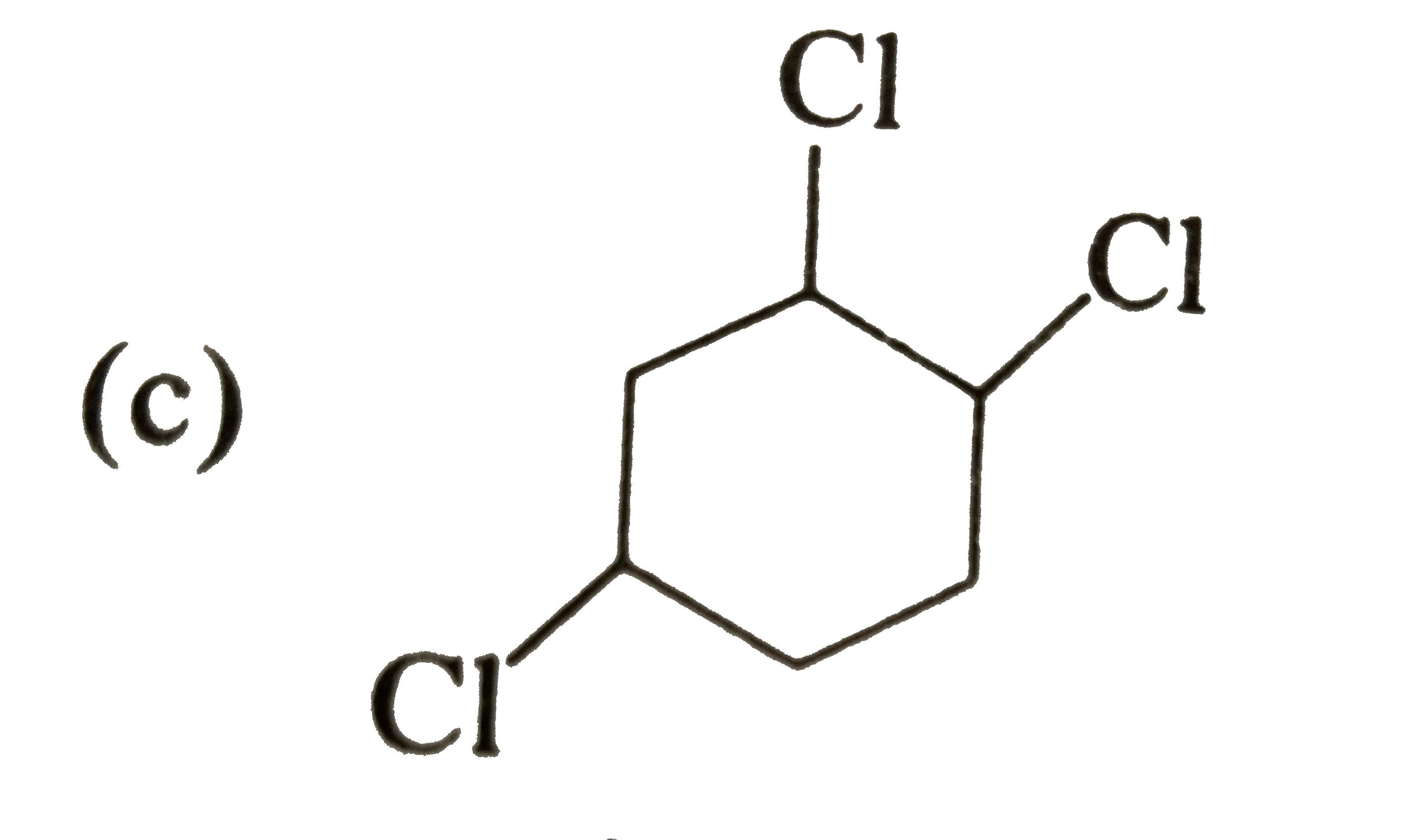Which of the following compounds does not have any geometrical isomer ?




The correct Answer is:D
To determine which of the given compounds does not have geometrical isomers, we need to understand the conditions under which geometrical isomerism occurs. Geometrical isomerism (or cis-trans isomerism) typically occurs in compounds with restricted rotation around a double bond or in cyclic compounds, where different groups can be arranged differently around the double bond or ring.
1. Identify the Compounds:
- List the compounds provided in the question. For this example, let's assume we have four compounds: A, B, C, and D.
2. Check for Double Bonds or Cyclic Structures:
- Geometrical isomerism is possible in compounds that have a carbon-carbon double bond (C=C) or are cyclic.
- For each compound, check if there is a C=C double bond or if it is a cyclic compound.
3. Analyze Substituents on the Double Bond or Ring:
- For compounds with a double bond, check if the substituents on each carbon of the double bond are different. If both carbons in the double bond have the same substituents, geometrical isomerism cannot occur.
- For cyclic compounds, check if there are two different groups attached to the same carbon in the ring. If both groups are the same, geometrical isomerism cannot occur.
4. Evaluate Each Compound:
- For each compound, apply the above checks:
- Compound A: Has a double bond with different substituents → Can have geometrical isomers.
- Compound B: Has a double bond with the same substituents → Cannot have geometrical isomers.
- Compound C: Is cyclic with different substituents → Can have geometrical isomers.
- Compound D: Is cyclic with the same substituents → Cannot have geometrical isomers.
5. Conclusion:
- After evaluating all compounds, identify the compound that does not exhibit geometrical isomerism. In this case, it would be Compound B or Compound D, depending on the specific structures provided.
Final Answer:
The compound that does not have any geometrical isomers is Option D.
---
- List the compounds provided in the question. For this example, let's assume we have four compounds: A, B, C, and D.
- Geometrical isomerism is possible in compounds that have a carbon-carbon double bond (C=C) or are cyclic.
- For each compound, check if there is a C=C double bond or if it is a cyclic compound.
- For compounds with a double bond, check if the substituents on each carbon of the double bond are different. If both carbons in the double bond have the same substituents, geometrical isomerism cannot occur.
- For cyclic compounds, check if there are two different groups attached to the same carbon in the ring. If both groups are the same, geometrical isomerism cannot occur.
- For each compound, apply the above checks:
- Compound A: Has a double bond with different substituents → Can have geometrical isomers.
- Compound B: Has a double bond with the same substituents → Cannot have geometrical isomers.
- Compound C: Is cyclic with different substituents → Can have geometrical isomers.
- Compound D: Is cyclic with the same substituents → Cannot have geometrical isomers.
- After evaluating all compounds, identify the compound that does not exhibit geometrical isomerism. In this case, it would be Compound B or Compound D, depending on the specific structures provided.
The compound that does not have any geometrical isomers is Option D.
Topper's Solved these Questions
- ISOMERISMBOOK - HIMANSHU PANDEYCHAPTER - ISOMERISMEXERCISE - Level 3 (Q.76 To Q.100)
25 Videos
- ISOMERISMBOOK - HIMANSHU PANDEYCHAPTER - ISOMERISMEXERCISE - Level 3 (Q.101 To Q.125)
25 Videos
- ISOMERISMBOOK - HIMANSHU PANDEYCHAPTER - ISOMERISMEXERCISE - Level 3 (Q.26 To Q.50)
25 Videos
- HALIDESBOOK - HIMANSHU PANDEYCHAPTER - HALIDESEXERCISE - Subjective Type Problems
10 Videos
- NOMENCLATUREBOOK - HIMANSHU PANDEYCHAPTER - NOMENCLATUREEXERCISE - Section Iv (Q.26 To Q.26)
1 Videos
Similar Questions
Knowledge Check
Which of the following compound does not show geometrical isomerism?
A B
B C
C D
D
Which of the following compounds does not have diastereomers?
ABut−2−eneBButane−2,3−diolC2,3−DibromopentaneDButan−2−olWhich of the following compounds does not have an ester linkage ?
AEthyl acid sulphateBDiethyl hydrogen phosphateCEthyl acetateDCH3CO−O−CO−CH3
